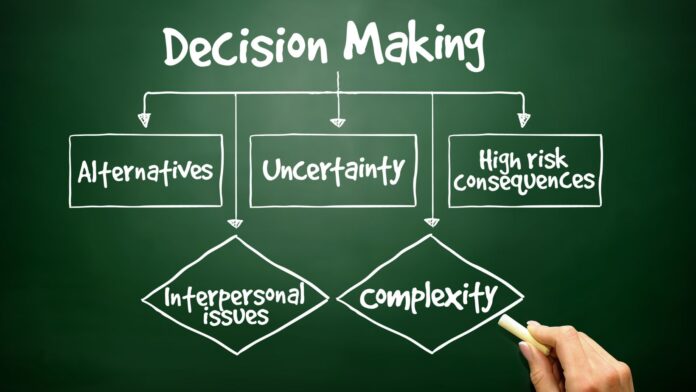When it comes to making decisions, there are numerous factors that come into play. Whether it’s choosing what to eat for dinner or deciding on a career path, our choices are influenced by a variety of factors. In this article, we will explore the key considerations that come into play when deciding how to make important decisions. Understanding these factors can help us make more informed choices and ultimately lead to better outcomes.
One of the first factors to consider when making a decision is the available options. We often find ourselves weighing the pros and cons of different choices, considering the potential benefits and drawbacks of each. Additionally, the timeframe in which a decision needs to be made can also impact the available options. Being aware of the range of choices at hand is crucial in the decision-making process.
Which Factors Are Considered When Deciding How to Make Goods and Services? Choose Three Answers.
When it comes to making decisions, there are various factors that can influence the process. By understanding these factors, we can make more informed choices that align with our goals and values. Here are some key factors to consider:
1. Available Options
One of the first things to consider when making a decision is the range of options available. It’s important to have a clear understanding of all the possibilities before weighing the pros and cons. This allows us to make a more objective assessment and choose the option that best suits our needs.
2. Personal Values and Priorities
Our personal values and priorities play a significant role in the decision-making process. These are the guiding principles that shape our beliefs and define what is important to us. When faced with a decision, it’s crucial to consider how each option aligns with our values and contributes to our overall fulfillment. This ensures that our choices are in line with who we are and what we stand for.
3. Potential Consequences
Evaluating the potential consequences of a decision is essential for making informed choices. We must consider both the short-term and long-term effects of our decisions. This involves weighing the potential risks, benefits, and impacts on various aspects of our lives, such as relationships, finances, and personal well-being. By considering the potential consequences, we can anticipate the outcomes and make decisions that lead to better overall results.
By taking these factors into account, we can navigate the decision-making process more effectively. It allows us to make choices that are true to ourselves, aligned with our values, and contribute to our overall well-being. So, next time you find yourself facing a decision, remember to consider the available options, your personal values, and the potential consequences before making your choice.

Understanding the Problem or Objective
When it comes to making decisions, one of the first steps is to gain a thorough understanding of the problem or objective at hand. This step is crucial because without a clear understanding, it becomes challenging to determine the best course of action.
To gain this understanding, it is important to gather all relevant information and facts about the situation. This may involve conducting research, analyzing data, or seeking input from experts or stakeholders. By doing so, individuals can ensure that they have a comprehensive understanding of the problem or objective and can make more informed decisions.
Another aspect of understanding the problem or objective is considering the underlying causes or factors contributing to the situation. By identifying these causes, individuals can address the root of the problem rather than just the symptoms. This approach can lead to more effective and sustainable solutions.
Conclusion
Considering various factors is crucial when making decisions. Evaluating alternatives, assessing risks, and taking ethical and legal considerations into account are essential for making informed choices. Additionally, time constraints and the availability of resources and skills play a significant role in decision-making.
However, the decision-making process does not end with making a choice. Implementing and monitoring the decision is equally important. This involves creating an action plan, allocating resources effectively, communicating clearly, monitoring progress, and evaluating outcomes.
By following these steps, individuals can ensure that their decisions are executed smoothly and achieve the desired outcomes. It is through careful consideration of these factors and effective implementation and monitoring that successful decision-making can be achieved.


